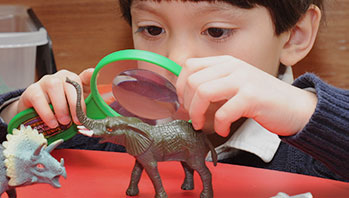- connecting cubes or paperclips
- masking tape
- pictures of plants of varying heights (if available, use pictures of children’s plants)
- scissors
- markers or crayons
- plant
- shortest
- tallest
MA Standards:
Mathematic/Counting and Cardinality/PK.CC.MA.5 Use comparative language, such as more/less, equal to, to compare and describe collections of objects.
MA Draft STE Standards:
Life Sciences/From Molecules to Organisms: Inheritance and Variation of Traits/LS1/3.A Describe/draw and compare the body parts of animals (including themselves) and plants they are investigating [System] and explain functions of some of the observable body parts. [Structure and Function]
Head Start Outcomes:
Social Emotional Development/Social Relationships Cooperates with others.
Logic and Reasoning/Reasoning and Problem Solving Classifies, compares, and contrasts objects, events, and experiences.
Logic and Reasoning/Symbolic Representation Represents people, places, or things through drawings, movement, and three-dimensional objects.
PreK Learning Guidelines:
Mathematics/Measurement 14 Use nonstandard units to measure length, weight, and amount of content in familiar objects.
Plants are Different

© Commonwealth of Massachusetts, Department of Early Education and Care (Jennifer Waddell photographer). All rights reserved.
Skill Focus: Measuring, Vocabulary
Give children a sheet of paper. Each sheet of paper should be a different height. Have each child draw a growing plant on the sheet. Say, Make it fill the entire page. After children complete their drawings, cut out the plants.
Place a line of masking tape horizontally across the workspace (if you have wall space this would be a good opportunity to display the plant garden) for children to use as a baseline. Encourage children to tape their plant so the bottom of the stem is on the baseline. Have children add sun and raindrops to help the plants “grow.”
You may want to have children measure each plant with cubes or paperclips and record how many <cubes> tall each one is. You may also have them place them in order according to their height. Ask children to show you which flower is the tallest and which flower is the shortest.
Adaptation: If you have very young children in the group, you may wish to do the activity with them one-on-one and have them compare just two, then three flowers.
